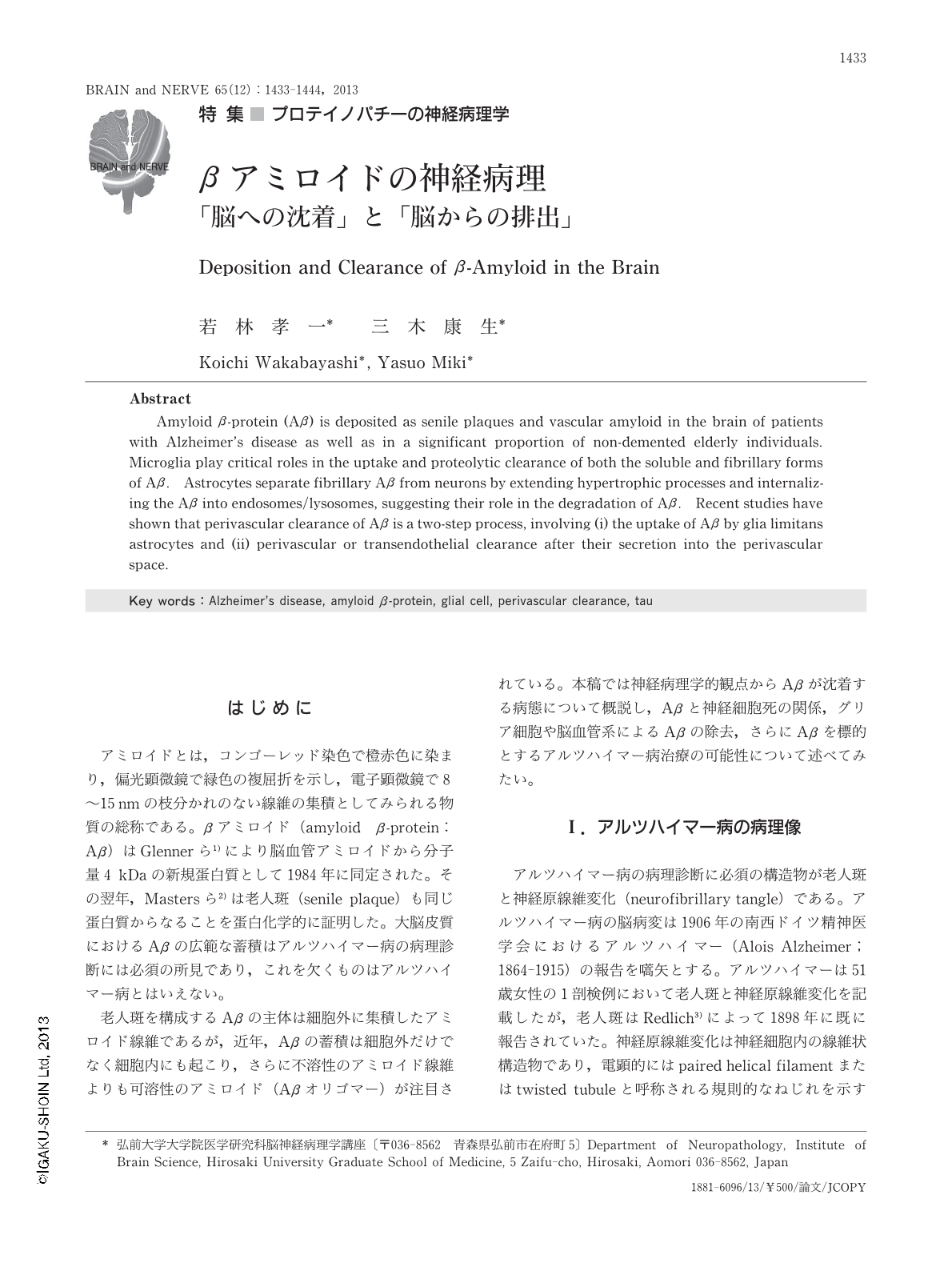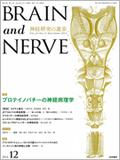Japanese
English
- 有料閲覧
- Abstract 文献概要
- 1ページ目 Look Inside
- 参考文献 Reference
はじめに
アミロイドとは,コンゴーレッド染色で橙赤色に染まり,偏光顕微鏡で緑色の複屈折を示し,電子顕微鏡で8~15nmの枝分かれのない線維の集積としてみられる物質の総称である。βアミロイド(amyloid β-protein:Aβ)はGlennerら1)により脳血管アミロイドから分子量4kDaの新規蛋白質として1984年に同定された。その翌年,Mastersら2)は老人斑(senile plaque)も同じ蛋白質からなることを蛋白化学的に証明した。大脳皮質におけるAβの広範な蓄積はアルツハイマー病の病理診断には必須の所見であり,これを欠くものはアルツハイマー病とはいえない。
老人斑を構成するAβの主体は細胞外に集積したアミロイド線維であるが,近年,Aβの蓄積は細胞外だけでなく細胞内にも起こり,さらに不溶性のアミロイド線維よりも可溶性のアミロイド(Aβオリゴマー)が注目されている。本稿では神経病理学的観点からAβが沈着する病態について概説し,Aβと神経細胞死の関係,グリア細胞や脳血管系によるAβの除去,さらにAβを標的とするアルツハイマー病治療の可能性について述べてみたい。
Abstract
Amyloid β-protein (Aβ) is deposited as senile plaques and vascular amyloid in the brain of patients with Alzheimer's disease as well as in a significant proportion of non-demented elderly individuals. Microglia play critical roles in the uptake and proteolytic clearance of both the soluble and fibrillary forms of Aβ. Astrocytes separate fibrillary Aβ from neurons by extending hypertrophic processes and internalizing the Aβ into endosomes/lysosomes, suggesting their role in the degradation of Aβ. Recent studies have shown that perivascular clearance of Aβ is a two-step process, involving (i) the uptake of Aβ by glia limitans astrocytes and (ii) perivascular or transendothelial clearance after their secretion into the perivascular space.

Copyright © 2013, Igaku-Shoin Ltd. All rights reserved.


